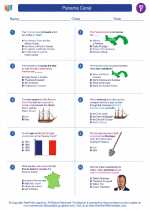New Year Festivals
New Year festivals are celebrated in various cultures around the world to mark the beginning of a new year. These festivals often include traditions, customs, and rituals that are specific to each culture, and they are a time for people to come together, reflect on the past year, and look forward to the year ahead.
Chinese New Year (Spring Festival)
Chinese New Year, also known as the Spring Festival, is a major celebration in China and other East Asian countries. It is based on the lunar calendar and usually falls between January 21 and February 20. The festival is marked by dragon and lion dances, fireworks, family gatherings, and the giving of red envelopes (hongbao) with money. Each year is associated with one of the 12 Chinese zodiac animals, and the celebrations vary from region to region.
Rosh Hashanah
Rosh Hashanah is the Jewish New Year, which usually occurs in September. It is a time for reflection, repentance, and renewal. Traditional customs include blowing the shofar (a ram's horn), eating symbolic foods like apples dipped in honey, and attending synagogue services. Rosh Hashanah begins the High Holy Days, culminating in Yom Kippur, the Day of Atonement.
Nowruz
Nowruz, meaning "new day," is the Persian New Year celebrated by people of Iranian and Central Asian descent. It marks the first day of spring and usually falls on or around March 21. Nowruz traditions include setting up a Haft-Seen table with seven symbolic items starting with the Persian letter "S," jumping over bonfires to cleanse the spirit, and visiting friends and family members.
Study Guide
Here are some key points to remember about New Year festivals:
- What are New Year festivals?
- How is Chinese New Year celebrated?
- What are the traditions of Rosh Hashanah?
- When is Nowruz celebrated and what are its customs?
- How do New Year festivals promote cultural unity and traditions?
[New Year Festivals] Related Worksheets and Study Guides:
.◂Social Studies Worksheets and Study Guides Sixth Grade. Panama Canal

 Worksheet/Answer key
Worksheet/Answer key
 Worksheet/Answer key
Worksheet/Answer key
 Worksheet/Answer key
Worksheet/Answer key
